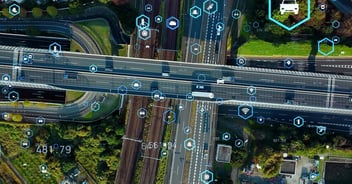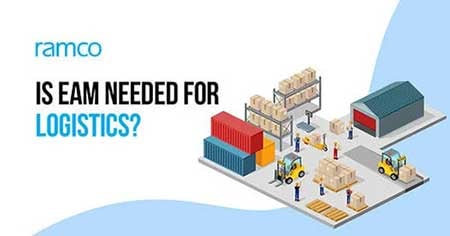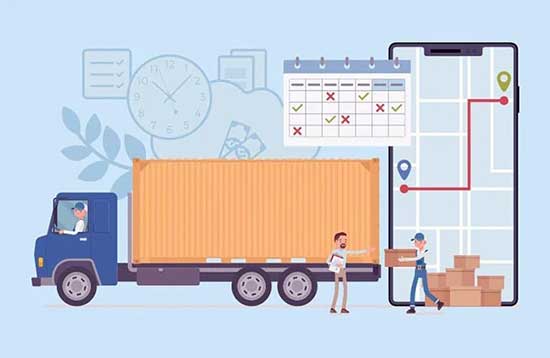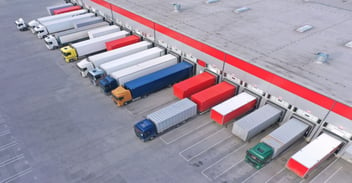

Enterprise Asset Management (EAM) is the art of managing asset maintenance and its integration with other functions in the organization. This includes not just the tangible, physical assets owned by an organization but also third-party assets that the organization takes the responsibility of maintaining. An effective EAM system is critical for fleet or asset-intensive logistics companies. Not just that, it can be leveraged for improving the availability and performance of operation-critical assets such as trucks, trailers, containers, MHE, cold storages, etc. It is the key to adoption of reliability-centered maintenance (RCM), the optimum maintenance strategy mix, which is a fine balance between reactive, preventive and predictive maintenance practices.
A lot of fleet owners today cut down on in-house maintenance activities and choose to outsource maintenance to third party workshops or service centers. Fleet owners with well-developed maintenance and repair infrastructure in place leverage their excess capacity by providing maintenance services to others, thus boosting their revenue. Fleet owners of both kinds will need to make decisions regarding the adoption of EAM for asset maintenance. While doing that, logistics companies often come across two dilemmas:
- Do we need EAM?
An organization having an in-house workshop or maintenance team will obviously need Enterprise Management Systems (EAM). However, this dilemma is common amongst those who outsource most or the entire maintenance. - What are the assets that we should cover in EAM?
Should only the assets involved in logistics operations be covered, such as trucks, trailers, and MHE? Or should it also include supporting assets such as hand-held terminals, air conditioners, and generators? If yes, what about IT assets such as laptops and printers? Where should the line be drawn?
Based on the extensive experience of implementing fleet and asset maintenance solutions across different sectors of the logistics industry, Ramco assists in addressing these dilemmas through 3 questions that an organization can ask themselves:
- Is it essential to track asset-level maintenance plan?
Irrespective of whether the maintenance is outsourced or not, an organization may prefer tracking the maintenance plan and schedule of each high-value or complex asset that impacts its operations. Such assets (like trucks and MHE) should be covered in EAM. This is also significant in scenarios where asset owners need to ensure compliance with maintenance-related regulatory requirements.
For assets that do not need significant planned maintenance, the maintenance schedule need not be tracked. So, they need not be covered in EAM. E.g., hand-held terminals and thermal printers. - Is it essential to track asset-level maintenance costs?
An organization generally chooses to track the maintenance cost of each high-value or maintenance-intensive asset that it owns. This tracking would also be required for hired assets for which maintenance costs are borne by the company. EAM becomes crucial in these scenarios since it enables effective tracking of asset-level maintenance costs.
If maintenance is completely outsourced, then the procurement system can provide the total cost of maintenance services over a period and break it down based on service types or service providers. However, it does not directly record asset-level maintenance costs. EAM provides a comprehensive history of maintenance costs across the entire lifecycle of the asset and enables comparison against the set benchmarks. It also assists in understanding the impact of internal and external factors (such as age and operating environment) on the maintenance cost and reporting of asset-level maintenance cost per KM run. - Is it essential to track asset-level maintenance history?
Maintenance history consists of elements such as:
- Details of maintenance activities performed
- Scheduled against actual timelines for completion of maintenance
- Resources (labor and tools) utilized for maintenance
- Material (spare parts and consumables) consumed for maintenance
It is logical to capture these elements at the asset-level for maintenance-intensive and complex assets. Maintenance history assists in keeping a track of the nature of issues and corrective action on each asset and enables informed asset repair-replace decisions.
There are no right or wrong answers to the above questions. Some may find it necessary to track asset-level maintenance plan/cost/history for a variety of big and small assets, whereas others may like to limit the scope only to assets that directly impact their logistics operations. Each organization needs to decide for itself. A balance needs to be achieved between the efforts and benefits. Both extremes - under-utilization and overkill of EAM have to be avoided. Under-utilization would deprive the business of the potential benefits of EAM, whereas an overkill would result in the effort (involved in tracking maintenance) outweighing the benefits that can be reaped from it.
If the answer to any one of the above is “Yes” then that asset type should be covered under EAM.
If the answers to all the above are “No” then that asset type should not be covered under EAM.
If the answers to all the above are “No” for all asset types, then the organization does not need EAM.
Ramco can assist in identifying the need and scope of EAM, followed by a comprehensive and integrated implementation that can boost efficiency and effectiveness of maintenance practices and contribute to improvement in availability, performance and quality of output from assets.


